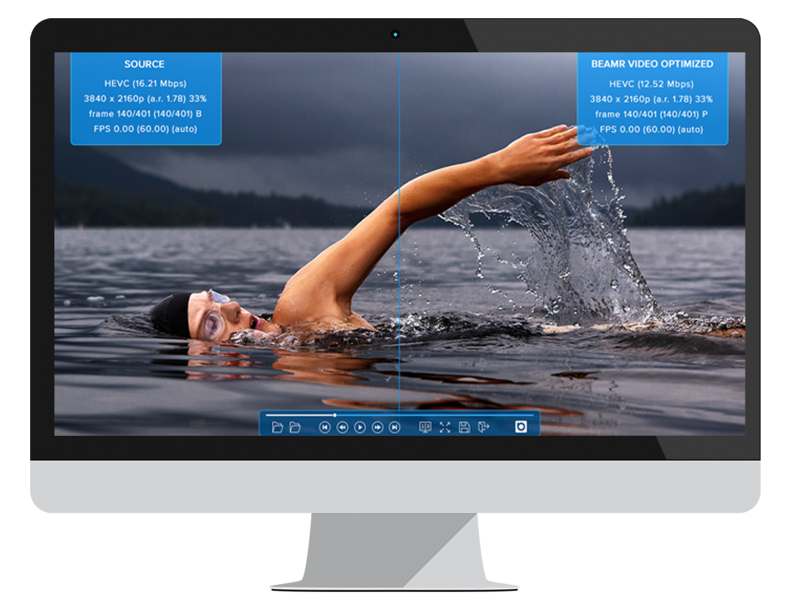As video services take a more aggressive approach to virtual reality (VR), the question of how to scale and deliver this bandwidth intensive content must be addressed to bring it to a mainstream audience.
While we’ve been talking about VR for a long time you can say that it was reinvigorated when Oculus grabbed the attention of Facebook who injected 2 billion in investment based on Mark Zuckerberg’s vision that VR is a future technology that people will actively embrace. Industry forecasters tend to agree, suggesting VR will be front and center in the digital economy within the next decade. According to research by Canalys, vendors will ship 6.3 million VR headsets globally in 2016 and CCS Insights suggest that as many as 96 million headsets will get snapped up by consumers by 2020.
One of VR’s key advantages is the fact that you have the freedom to look anywhere in 360 degrees using a fully panoramic video in a highly intimate setting. Panoramic video files and resolution dimensions are large, often 4K (4096 pixels wide, 2048 pixels tall, depending on the standard) or bigger.
While VR is considered to be the next big revolution in the consumption of media content, we also see it popping up in professional fields such as education, health, law enforcement, defense telecom and media. It can provide a far more immersive live experience than TV, by adding presence, the feeling that “you are really there.”
Development of VR projects have already started to take off and high-quality VR devices are surprisingly affordable. Earlier this summer, Google announced that 360-degree live streaming support was coming to YouTube.
Of course, all these new angles and sharpness of imagery creates new and challenging sets of engineering hurdles which we’ll discuss below.
Resolution and, Quality?
Frame rate, resolution, and bandwidth are affected by the sheer volume of pixels that VR transmits. Developers and distributors of VR content will need to maximize frame rates and resolution throughout the entire workflow. They must keep up with the wide range of viewers’ devices as sporting events in particular, demand precise detail and high frame rates, such as what we see with instant replay, slow motion, and 360-degree cameras.
In a recent Vicon industry survey, 28 percent of respondents stated that high-quality content was important to ensuring a good VR experience. Let’s think about simple file size comparisons – we already know that ultra HD file sizes take up considerably more storage space than SD and the greater the file size, the greater a chance it will impede the delivery. VR file sizes are no small potatoes. When you’re talking about VR video you’re talking about four to six times the foundational resolution that you are transmitting. And, if you thought that Ultra HD was cumbersome, think about how you’re going to deal with resolutions beyond 4K for an immersive VR HD experience.
In order to catch up with the file sizes we need to continue to develop video codecs that can quickly interpret the frame-by-frame data. HEVC is a great starting point but frankly given hardware device limitations many content distributors are forced to continue using H.264 codecs. For this reason we must harness advanced tools in image processing and compression. An example of one approach would be content adaptive perceptual optimization.
I want my VR now! Reaching End Users
Because video content comes in a variety of file formats including combinations of stereoscopic 3D, 360 degree panoramas and spherical views – they all come with obvious challenges such as added strain on processors, memory, and network bandwidth. Modern codecs today use a variety of algorithms to quickly and efficiently detect these similarities, but they are usually tailored to 2D content. However, a content delivery mechanism must be able to send this to every user and should be smart to optimize the processing and transmitting of video.
Minimizing latency, how long can you roll the boulder up the hill?
We’ve seen significant improvements in the graphic processing capabilities of desktops and laptops. However, to take advantage of the immersive environment that VR offers, it’s important that high-end graphics are delivered to the viewer as quickly and smoothly as possible. The VR hardware also needs to display large images properly and with the highest fidelity and lowest latency. There really is very limited room for things like color correction or for adjusting panning from different directions for instance. If you have to stitch or rework artifacts, you will likely lose ground. You need to be smart about it. Typical decoders for tablets or smart TVs are more likely to cause latency and they only support lower framerates. This means how you build the infrastructure will be the key to offering image quality and life-like resolution that consumers expect to see.
Bandwidth, where art thou?
According to Netflix, for an Ultra HD streaming experience, your Internet connection must have a speed of 25 Mbps or higher. However, according to Akamai, the average Internet speed in the US is only approximately 11 Mbps. Effectively, this prohibits live streaming on any typical mobile VR device which to achieve the quality and resolution needed may need 25 Mbps minimum.
Most certainly the improvements in graphic processing and hardware will continue to drive forward the realism of the immersive VR content, as the ability to render an image quickly becomes easier and cheaper. Just recently, Netflix jumped on the bandwagon and became the first of many streaming media apps to launch on Oculus’ virtual reality app store. As soon as all the VR display devices are able to integrate with these higher resolution screens, we will see another step change in the quality and realism of virtual environments. But will the available bandwidth be sufficient, is a very real question.
To understand the applications for VR, you really have to see it to believe it
A heart-warming campaign from Expedia recently offered children at a research hospital in Memphis Tennessee the opportunity to be taken on a journey of their dreams through immersive, real-time virtual travel – all without getting on a plane: https://www.youtube.com/watch?time_continue=179&v=2wQQh5tbSPw
The National Multiple Sclerosis Society also launched a VR campaign that inventively used the tech to give two people with MS the opportunity to experience their lifelong passions. These are the type of immersive experiences we hope will unlock a better future for mankind. We applaud the massive projects and time spent on developing meaningful VR content and programming such as this.
Frost & Sullivan estimates that $1.5 billion is the forecasted revenue from Pay TV operators delivering VR content by 2020. The adoption of VR in my estimation is only limited by the quality of the user experience, as consumer expectation will no doubt be high.
For VR to really take off, the industry needs to address some of these challenges making VR more accessible and most importantly with unique and meaningful content. But it’s hard to talk about VR without experiencing it. I suggest you try it – you will like it.

